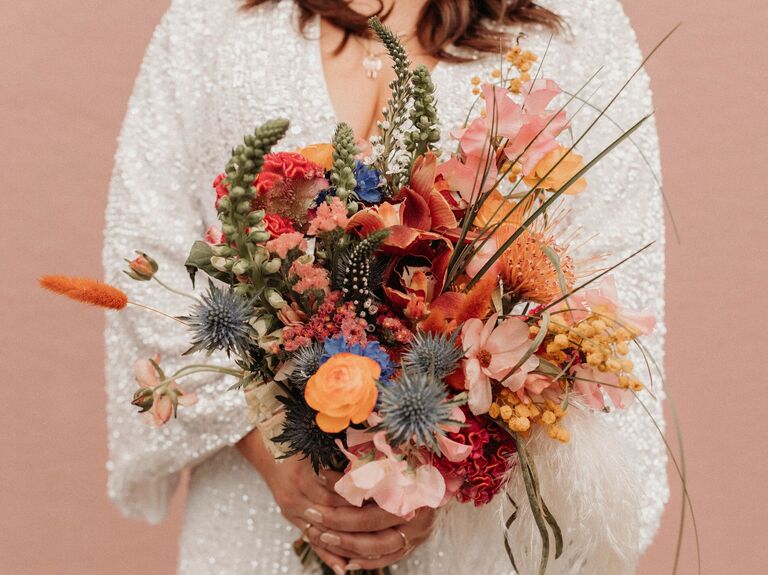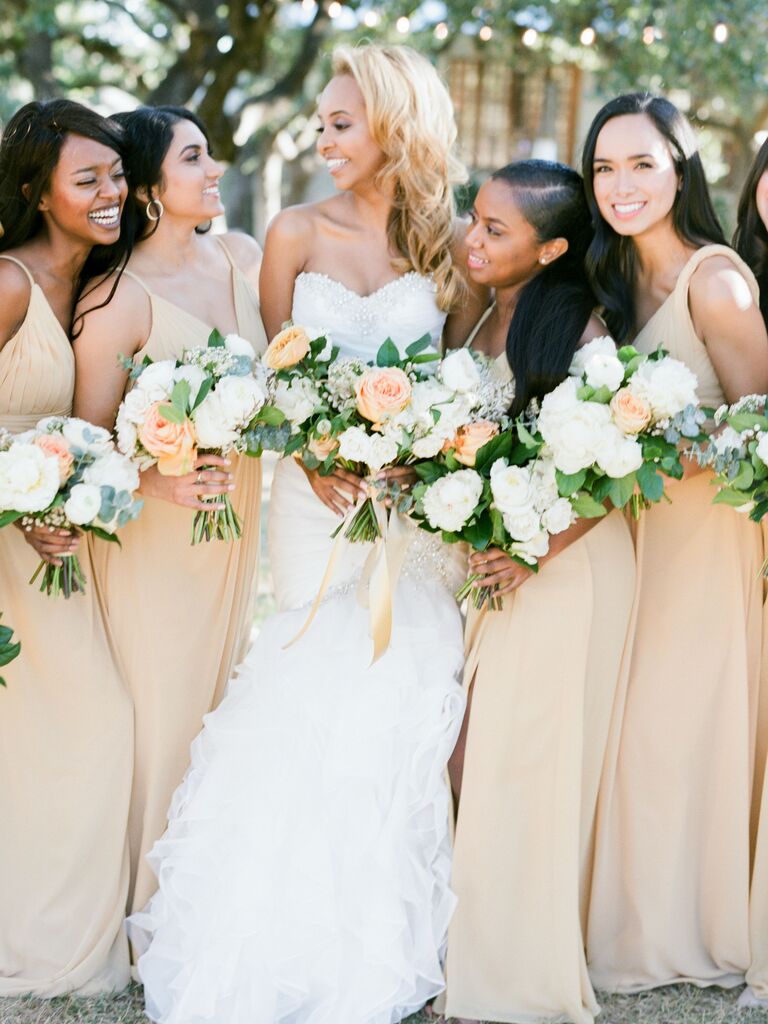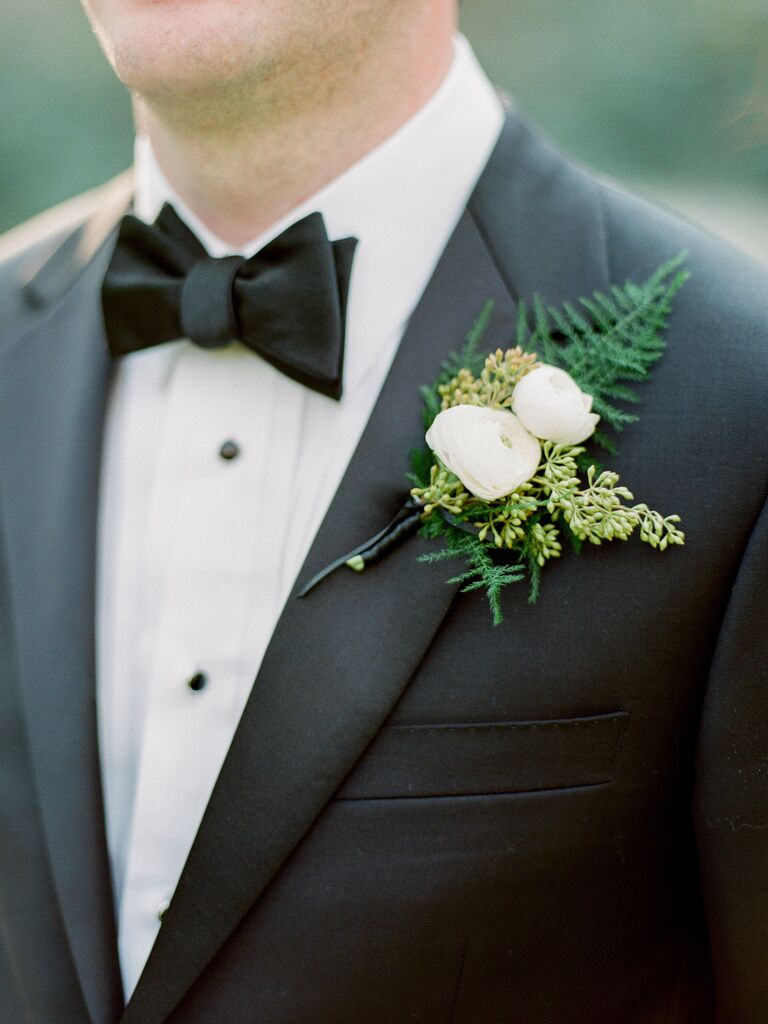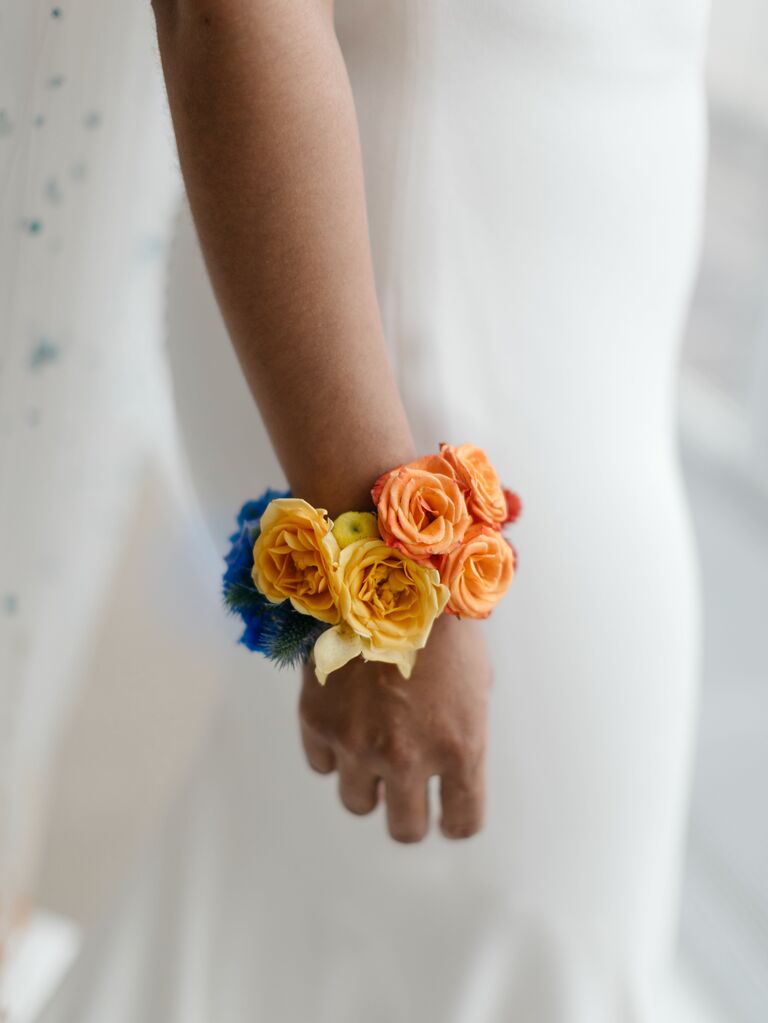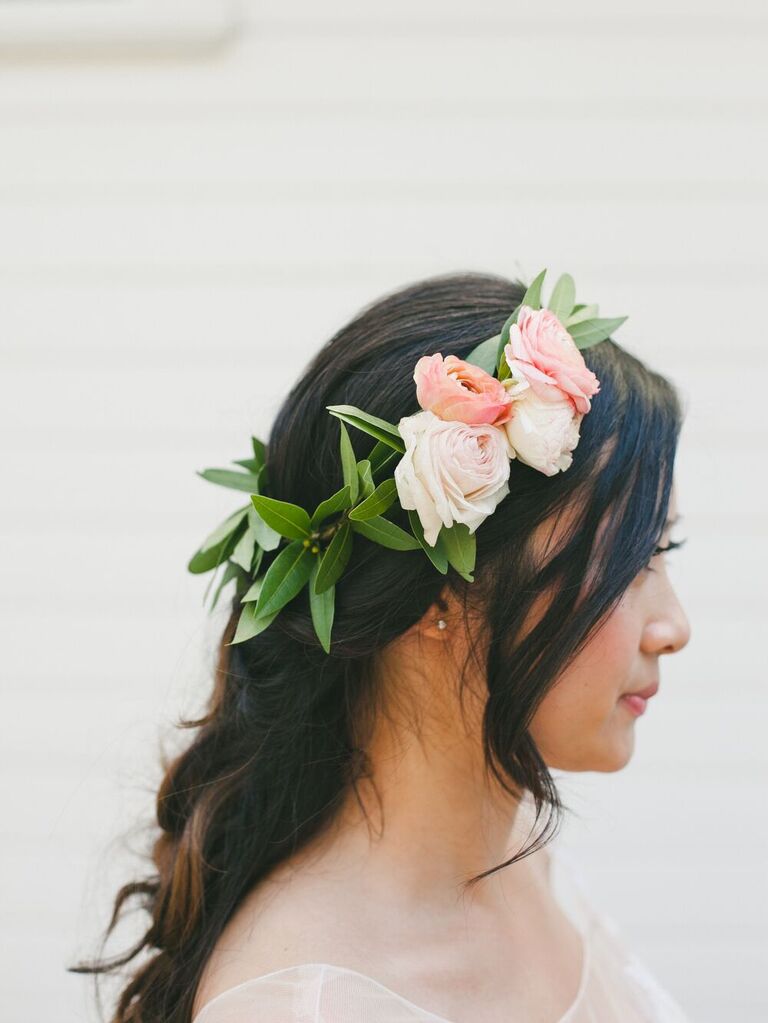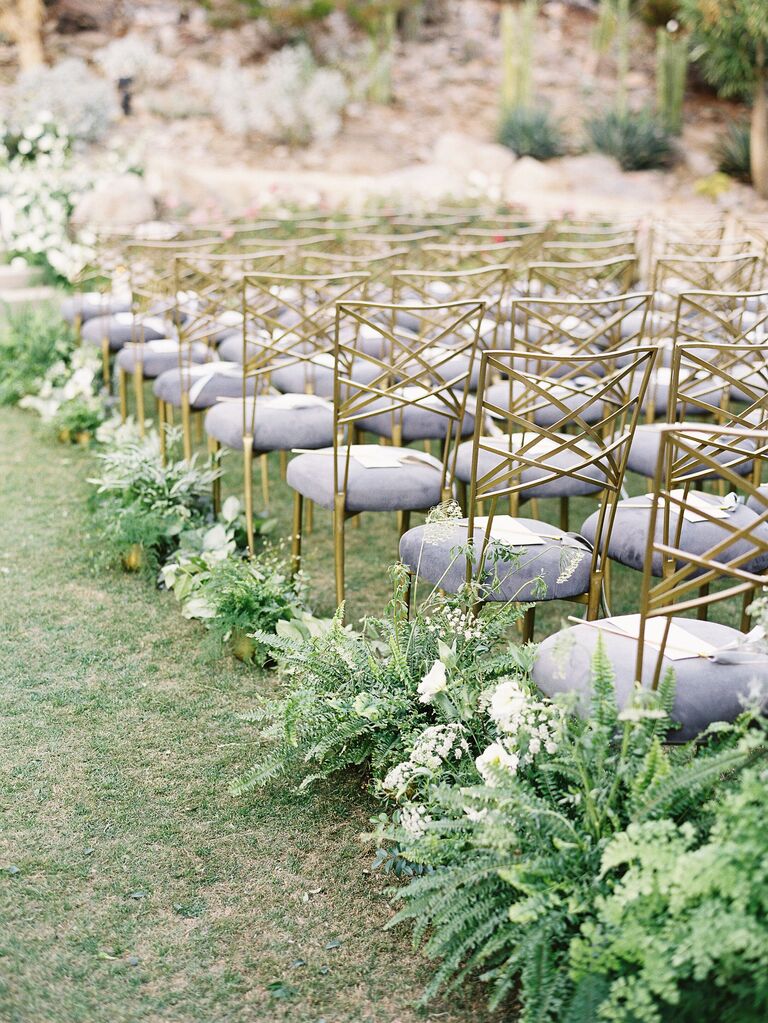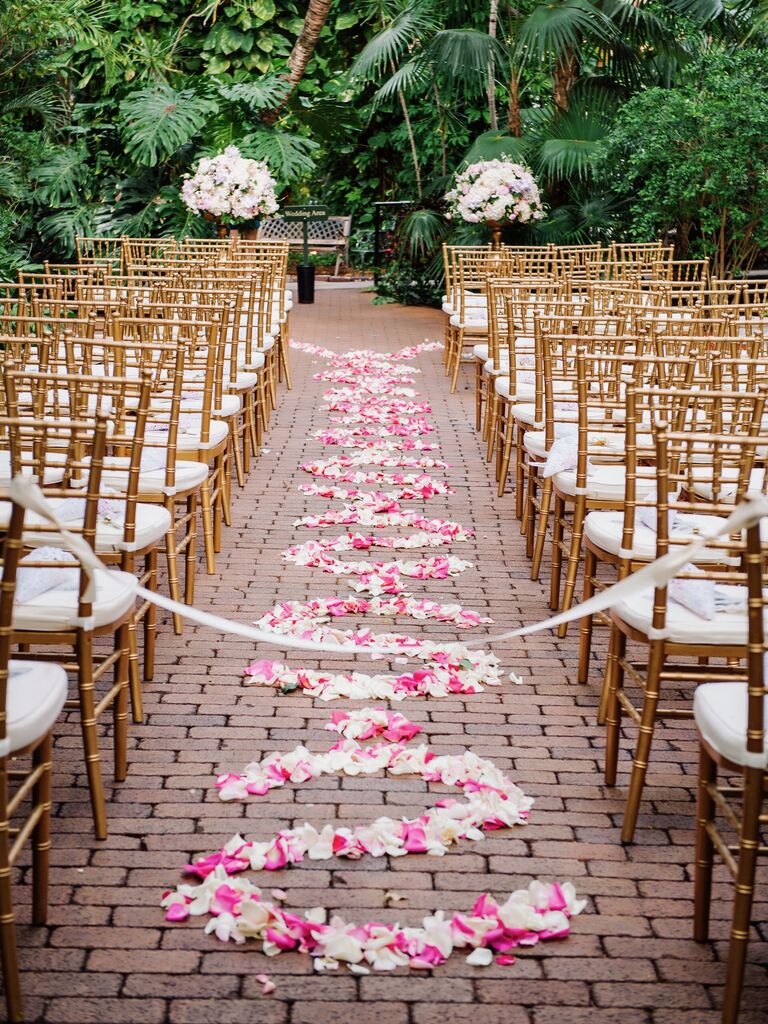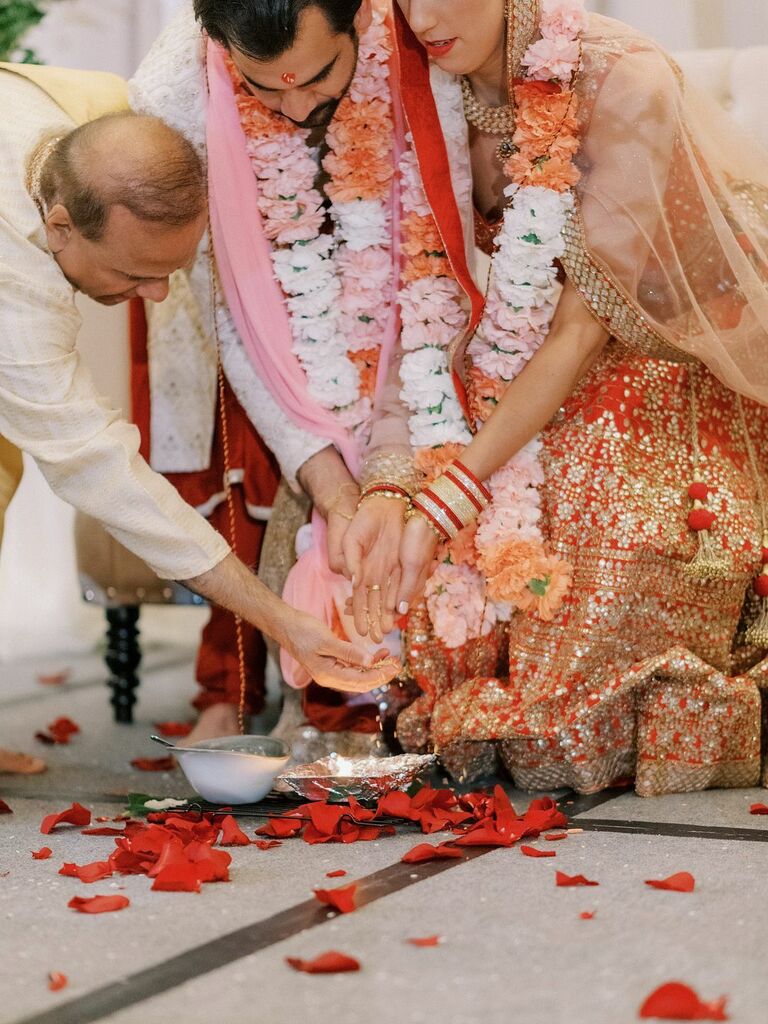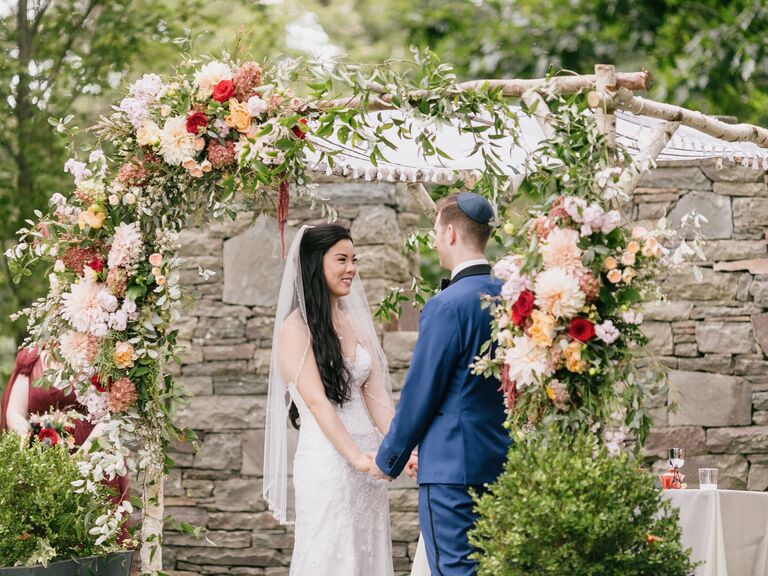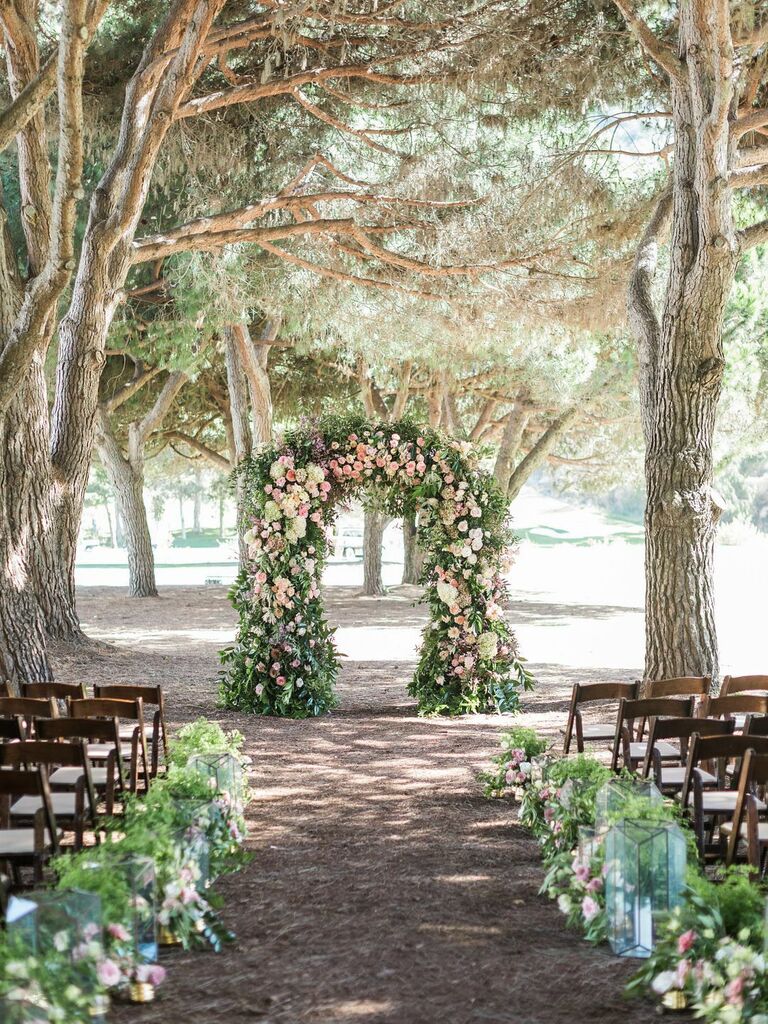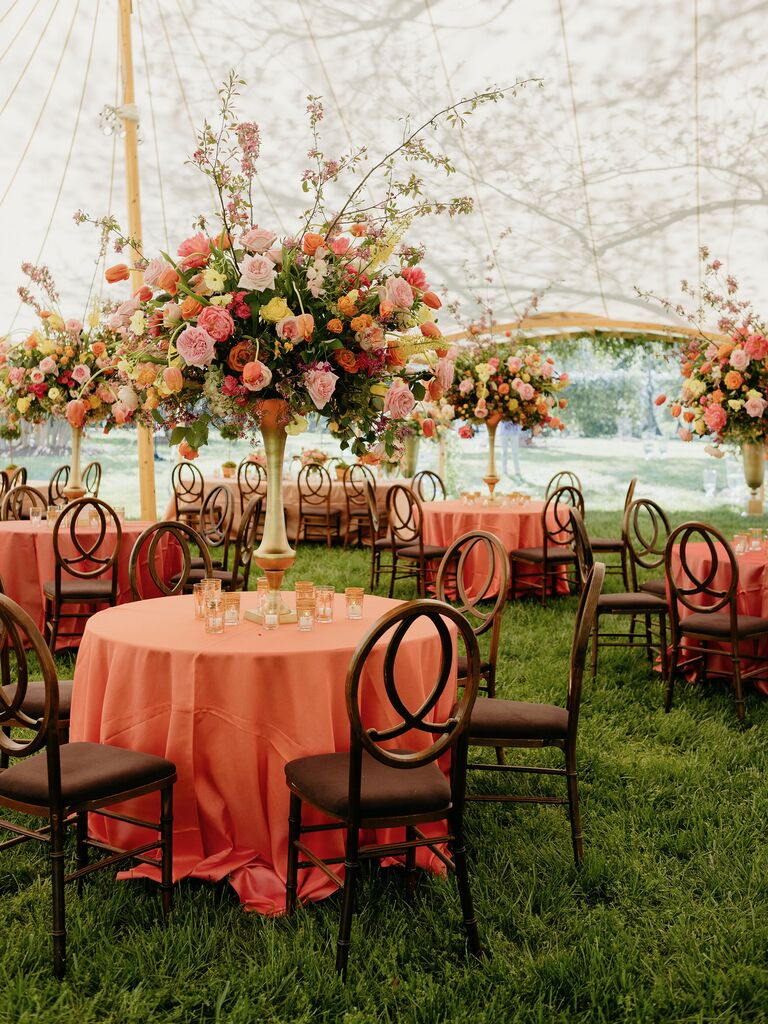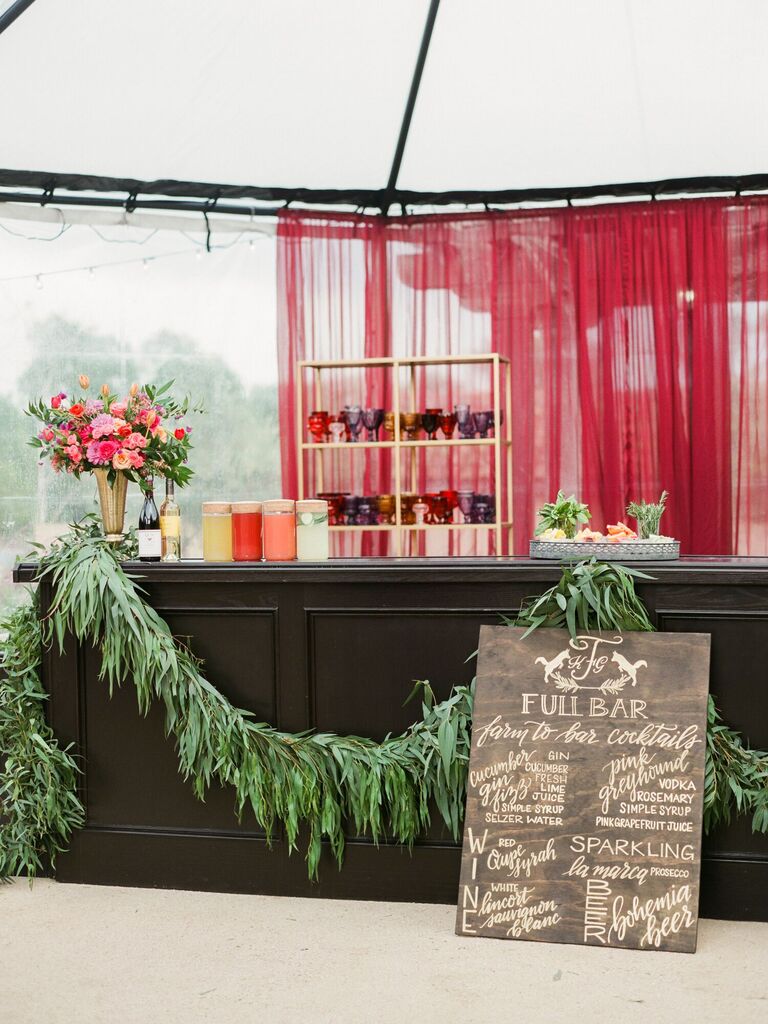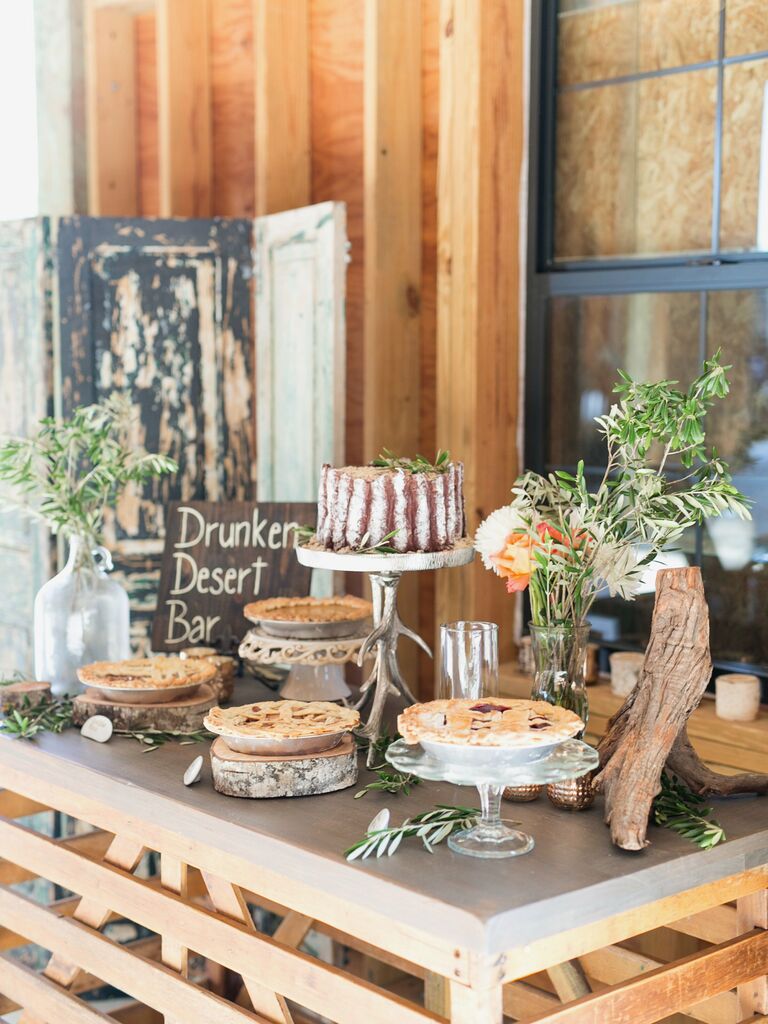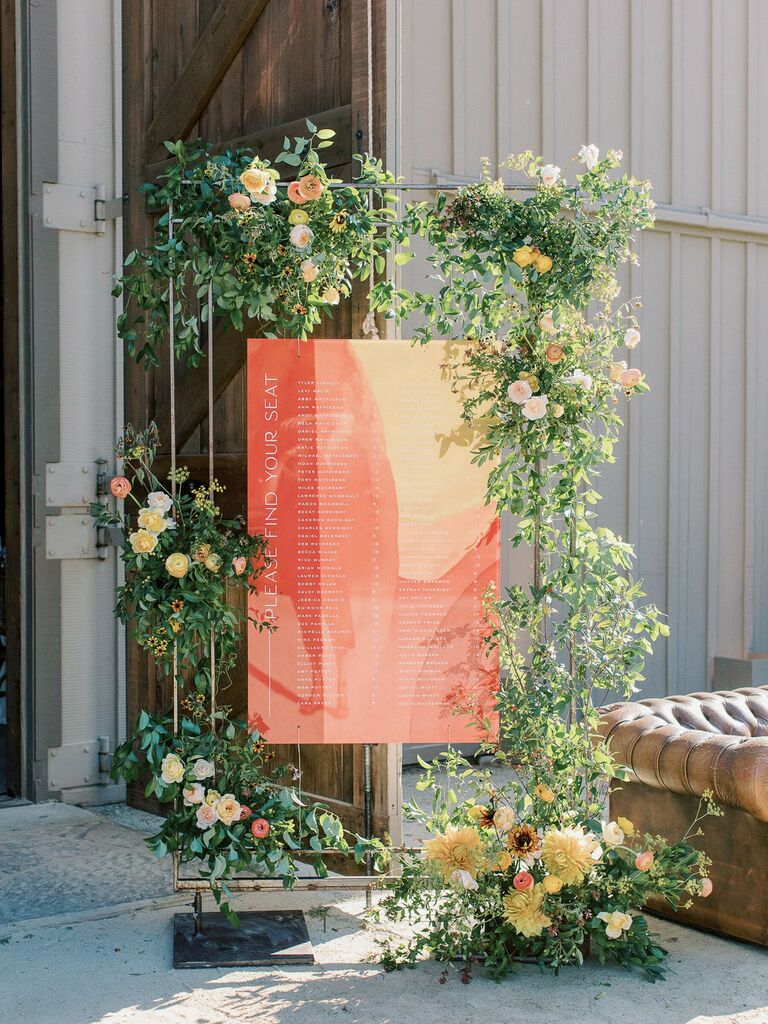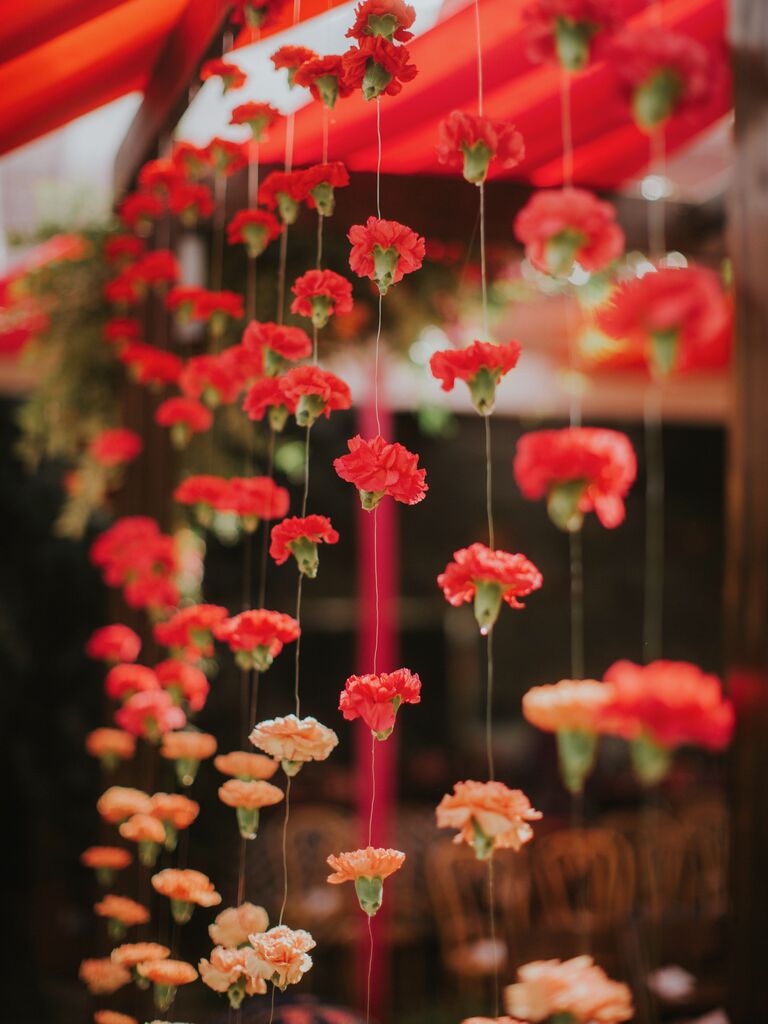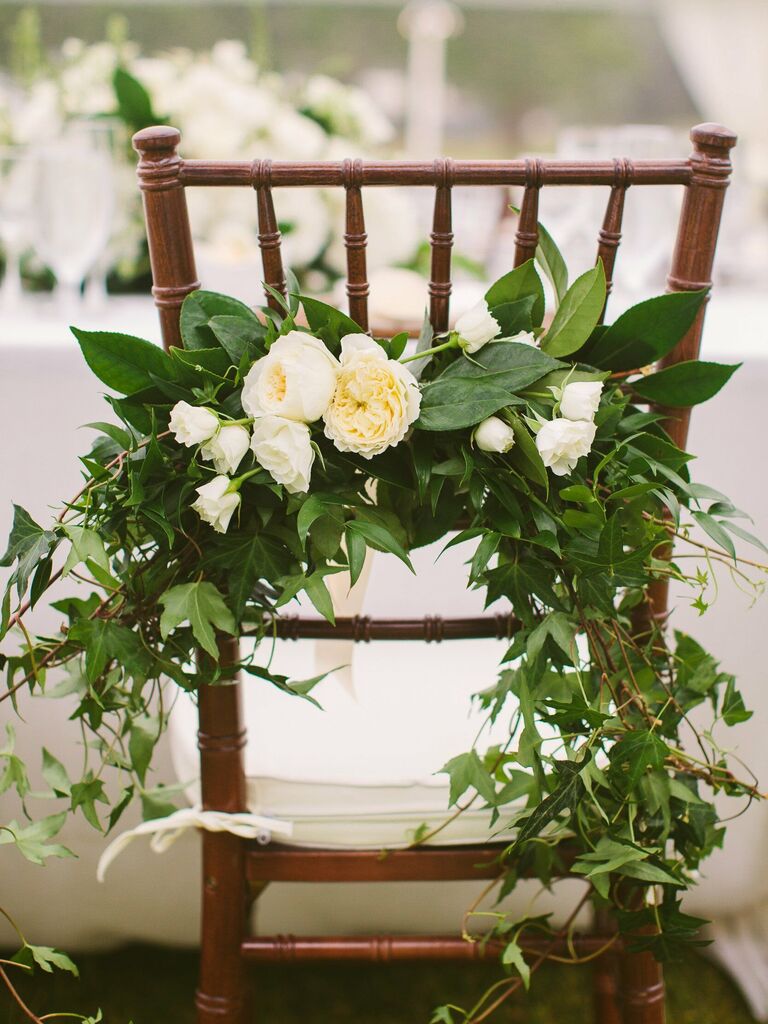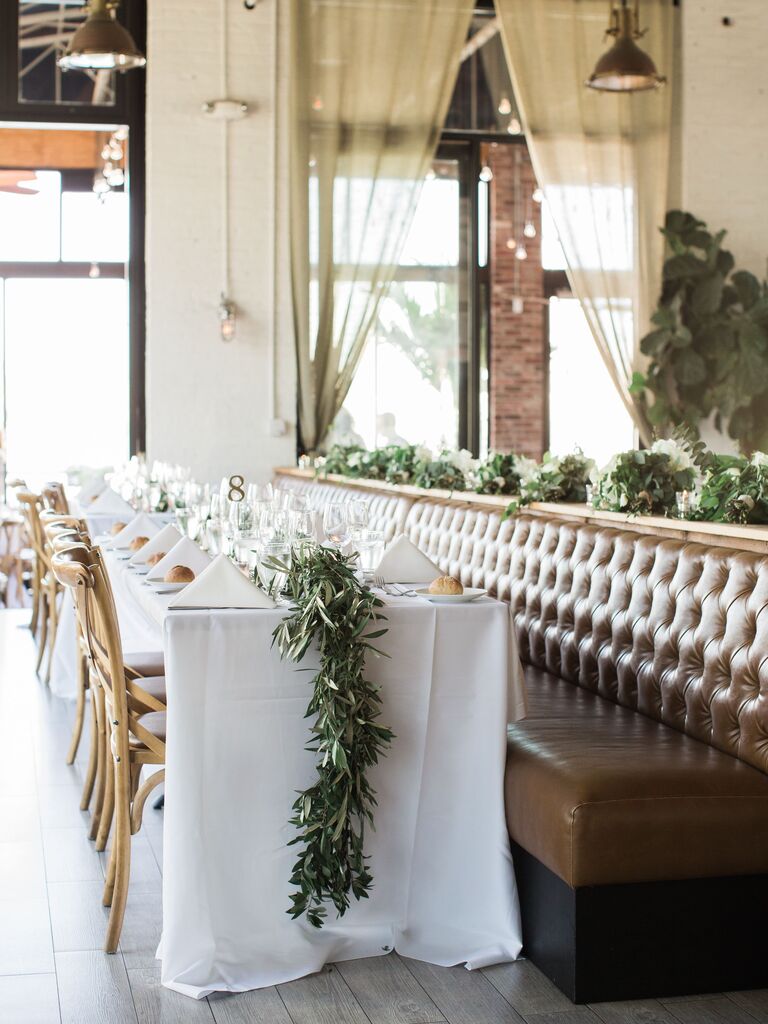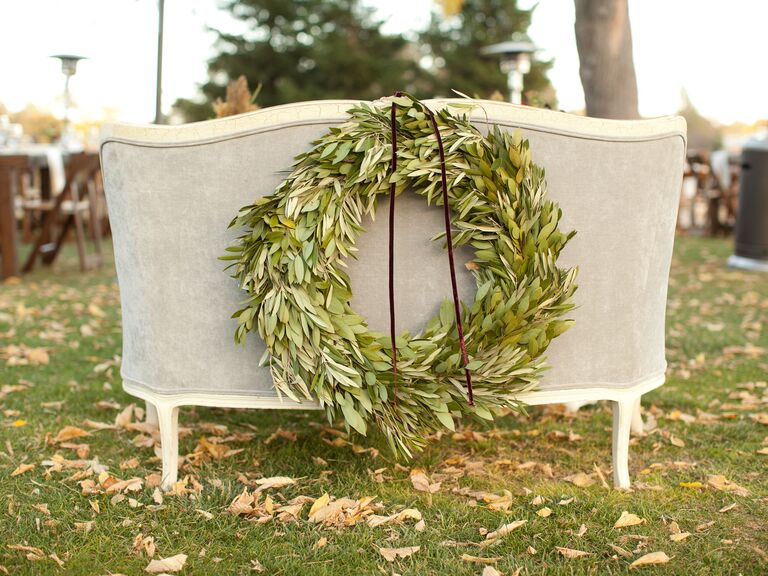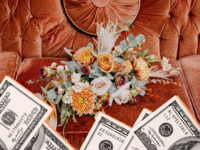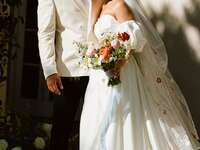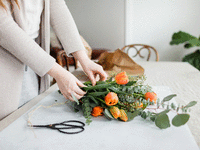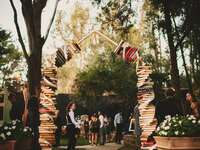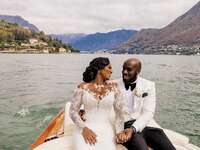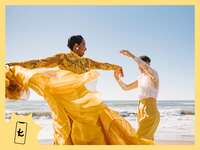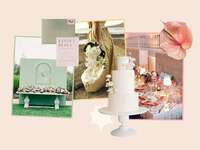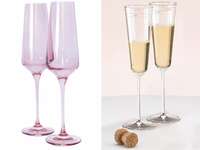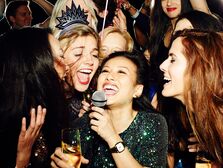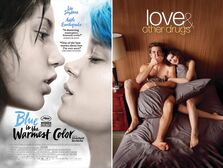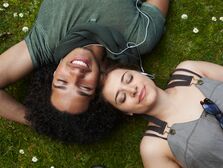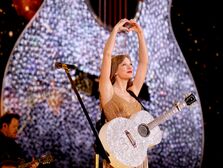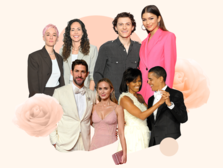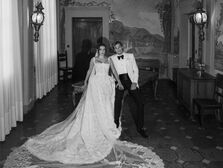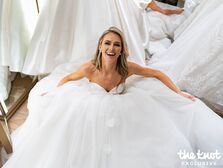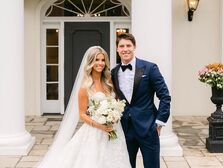22 Arrangements for Your Wedding Flower Checklist, From Ceremony to Reception
Choosing your flower arrangements is one of the most important steps of planning a wedding and bringing your inspo to life. Chances are you already know about the basics, like bouquets, centerpieces and boutonnieres, but your wedding flower checklist doesn't end there. Fresh flowers have the ability to quickly add color, drama and life to any ceremony or reception space, so we're all about utilizing them wherever and whenever you can as part of your event design. To make it easier, we've outlined what flowers are needed for a wedding—from the ceremony to the reception and beyond—to help you determine exactly which ones are essential for your wedding day. When you're ready to get going (or if you need even more advice for your list of wedding flowers), find your florist on The Knot Vendor Marketplace.
In this article:
Printable Wedding Flower Checklist
When you're deciding what flowers you need for a wedding, you should always default to your florist's recommendations based on your budget and wedding vision.
"For some people, the ceremony is of utmost importance, so they will want some sort of an installation or a floral arch created. For others, the reception is where they want to go heavier on the flowers," says Allison Futeral, owner of Crimson Horticultural Rarities, a wedding floral design and botanical studio in Oakland, California. "When I am meeting with a couple and budget is a factor, I will suggest fewer, but larger elements. You have your tables and the personal flowers and then from there...what will make the most impact for what you would like to spend. We want our clients and their guests to be truly wowed."
You likely won't needeverything on this list, but for a quick glance at all of your options, here's our free, printable wedding flower checklist.
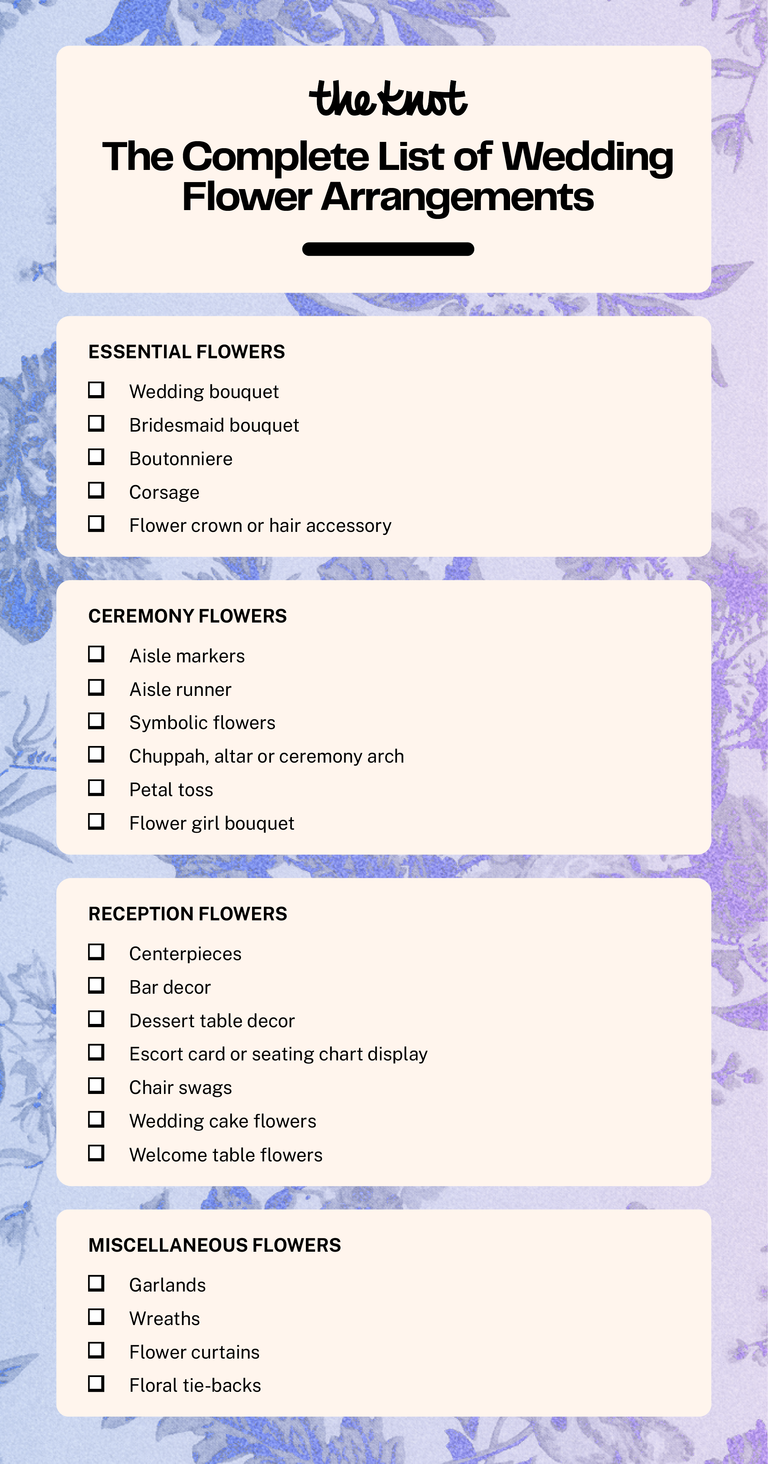
What Flowers Do You Need for a Wedding?
The specific flowers you need for your wedding ultimately depends on what's most important to you—and of course your budget, says Futeral. She recommends starting the process at least six months in advance, but because the best florists book up fast, it's a good idea to hire your florist a year before the wedding if possible. "As for my process, I get into the details about a month in advance of the wedding day. This is when I start ordering blooms and designing it all," Futeral says.
Once you've hired a florist, they'll get to work on creating mock-ups and vision boards based on your biggest priorities and desired aesthetic. (Still undecided on your wedding inspo? TakeThe Knot Style Quiz to get ideas). Here's a closer look at which flower arrangements you might choose to include in your decor.
1. Wedding bouquet
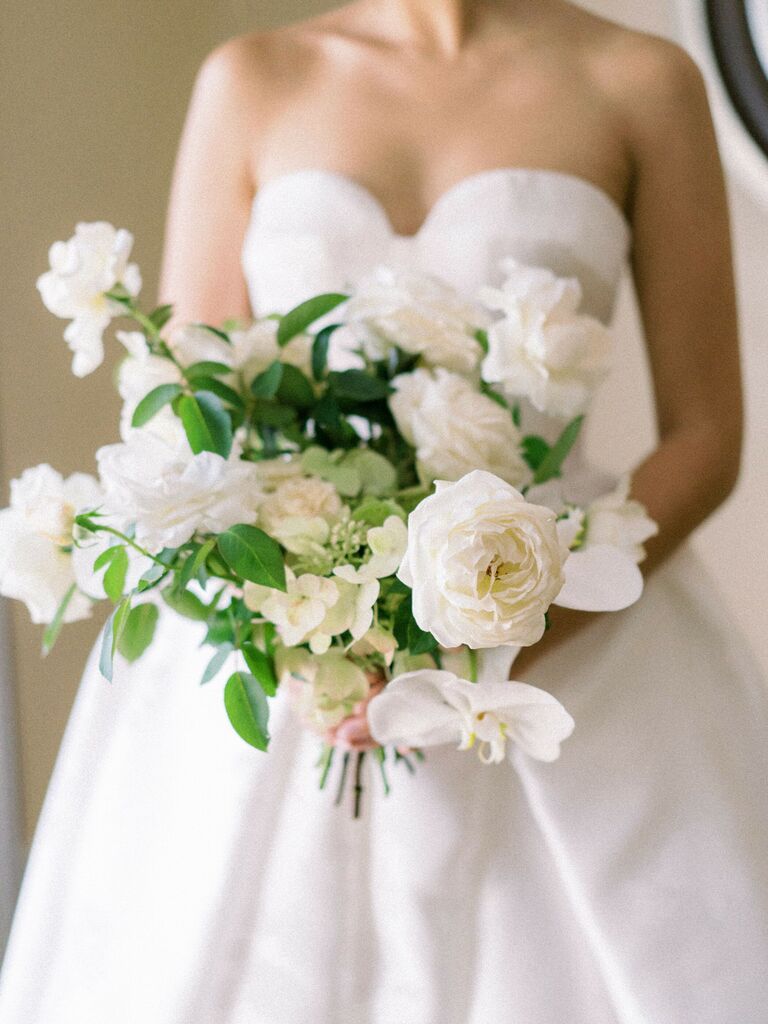
Undoubtedly one of the most well-known flower arrangements of all time, the wedding bouquet is a bundle of flowers that is carried by the bride or to-be-wed throughout the entire day. You'll have it with you for the ceremony processional, followed by wedding portraits, your reception entrance and ultimately the bouquet toss, if you choose to follow that tradition. There are plenty of bouquet styles, sizes and shapes to choose from, depending on the theme and formality of your wedding.
2. Bridesmaid bouquet
Bridesmaid bouquets tend to be smaller versions of the main wedding bouquet, often incorporating the same types of wedding flowers, a similar color palette and general design style. Each bridesmaid should have their own bouquet, including the maid or matron of honor.
3. Boutonniere
A single bloom (or cluster of several small buds) that is attached to the left lapel of a tuxedo or suit jacket. Boutonnieres are traditionally worn by grooms and male wedding party members, including groomsmen, ushers and close family members, such as the couple's fathers. Calla lilies, ranunculus, spray roses and baby's breath are commonly used for boutonnieres.
4. Corsage
Worn on the wrist like a bracelet, the corsage is a single bloom or small cluster of blooms that has been arranged with ribbon, elastic, tulle or a metal cuff. Aside from high school proms, corsages are typically worn by mothers and grandmothers at weddings, although they've also become a trendy alternative to bridesmaid bouquets. Sturdier flowers, like orchids, roses and carnations, are popular choices for corsages.
5. Flower crown
First popularized by boho brides, flower crowns are a fun addition to your wedding flower checklist if you love a whimsical, laid-back aesthetic. They're also commonly worn by flower girls—and if you're including a pet in your wedding, we can't resist dressing them up with a floral collar.
6. Aisle marker
Wedding aisle markers are small arrangements of flowers or greenery placed along the ceremony aisle at the end of each chair row or pew.
7. Aisle runner
While fabric is most often used for aisle runners, you can opt to use fresh flower petals scattered along the aisle instead, either down the center or along the sides. For a dramatic, unique wedding idea, arrange the flowers in an ombré or swirled pattern for the length of the aisle.
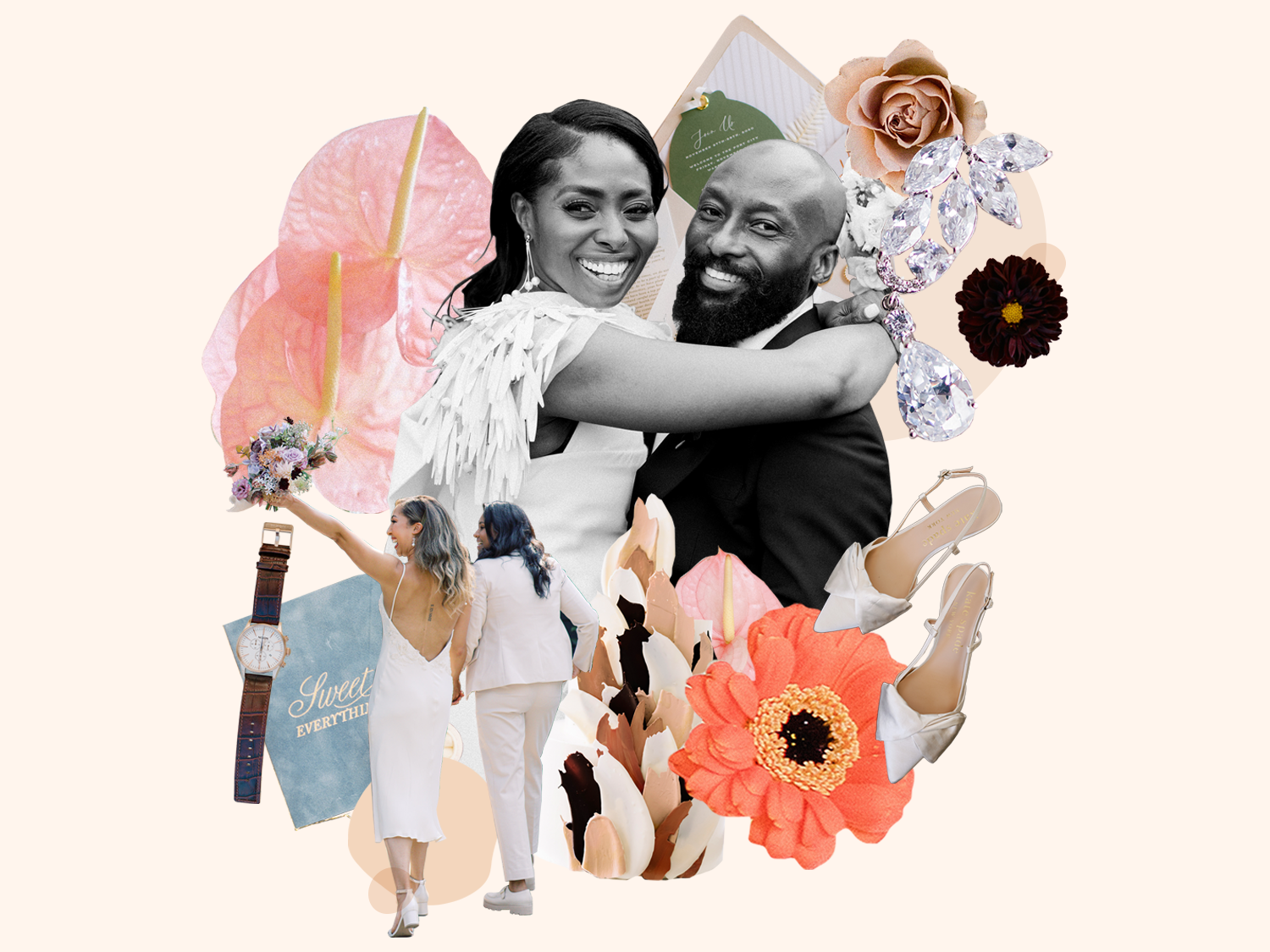
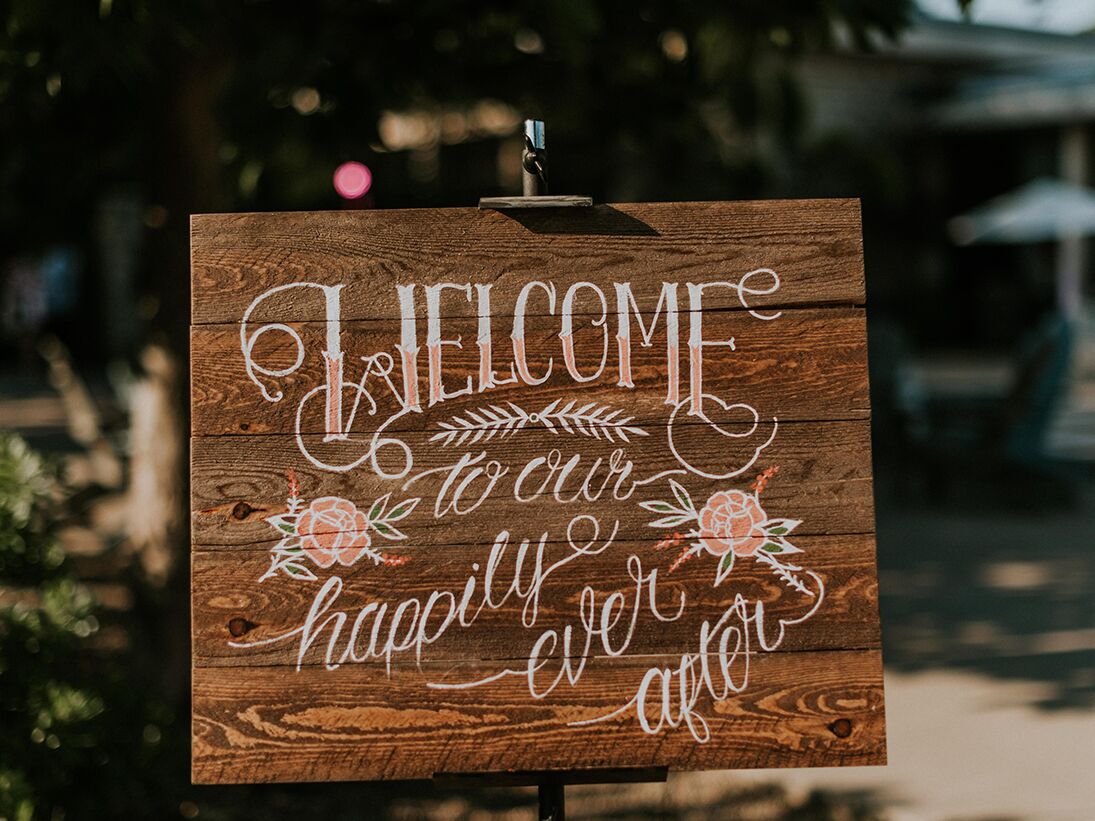

8. Ceremonial flowers
Depending on your culture, you may need special flowers to use as part of your wedding ceremony. Some examples include the exchanging of floral garlands (jai mala) during Hindu weddings or wearing leis for a Hawaiian wedding ceremony.
9. Chuppah
The chuppah is a square wedding canopy decorated with branches, greenery or flowers. It's an integral part of the traditional Jewish wedding ceremony and is draped with a cloth on the top, usually a tallit (prayer shawl) or other fabric chosen by the couple.
10. Flower arch
The flower arch is a popular wedding flower checklist item for Christian and secular ceremonies. The wedding arch is typically made from wood or plastic in a curved shape and decorated with flowers, greenery and other botanical accents. It frames the front of the altar where you'll exchange your vows and serves as a backdrop for photos.
11. Petal Toss Flowers
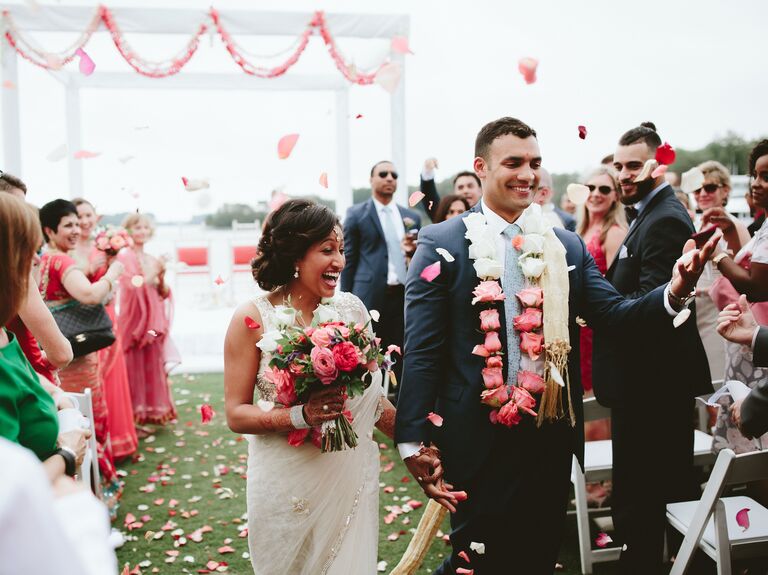
Bunches of individual flower petals are tossed into the air by your guests during the ceremony recessional or your wedding exit. Because the petals need to be cleaned up before they decompose (and can sometimes leave stains behind), some venues have strict rules about flower petal tosses, so confirm that it's allowed before choosing to include this idea in your celebration
12. Wedding centerpiece
As the name implies, centerpieces are flower arrangements displayed at the center of each wedding reception table. As the main wedding decor item for your reception tables, the centerpieces should directly reflect your wedding theme, color palette and formality. "If you have an eight-to-10-person round, then you will put one larger arrangement that suits the size and then add your candles," says Futeral. "If you have king's tables (which are my favorite) then we generally suggest a few medium-sized arrangements with either little satellite arrangements or bud vases in between and then of course add your candles. This all depends on the lushness that you want." You can choose from high or low centerpieces, or alternate the two throughout your tables for added visual interest. In the end, your wedding florist will help you choose centerpieces that work best for your budget and theme.
13. Bar decor
This wedding flower checklist item includes garlands and flower centerpieces used to decorate your cocktail bar. The main purpose of your bar is to serve drinks to your guests, but it's also another opportunity to personalize your wedding decor with flowers or greenery accents.
14. Dessert table
At the reception, adorn your wedding cake table or dessert table with small flower arrangements or bud vases. Alternatively, you can dress up the table with a garland draped across the front.
15. Escort card or seating chart display
Incorporate flowers as part of your wedding escort card display or add flowers and greenery to your wedding seating chart listing the guests' table assignments.
16. Floral curtain
A wedding backdrop made from flowers, greenery or individual petals that have been threaded onto string. Floral curtains and garlands are traditionally used for Indian haldi ceremonies and to decorate the mandap. Carnations, marigolds, orchids and roses are some of the best blooms for this floral design technique.
17. Floral swag
A tiny cluster of flowers and greenery, typically arranged into a crescent shape. Add swags to the flower checklist for your wedding to decorate wedding signs, entryways, altars, chairs and more.
18. Floral tie-back
These petite arrangements are attached to ribbon or string and used to secure curtains or other drapery. They're frequently used for ceremony backdrops and to decorate the poles of a reception tent.
19. Garland
A strand-like arrangement of greenery and flowers. Garlands have endless uses for your wedding day—they can be draped on the backs of chairs, wrapped around a banister, placed down the center of long banquet tables or suspended from chandeliers above the dance floor to create a magical effect.
20. Wedding cake
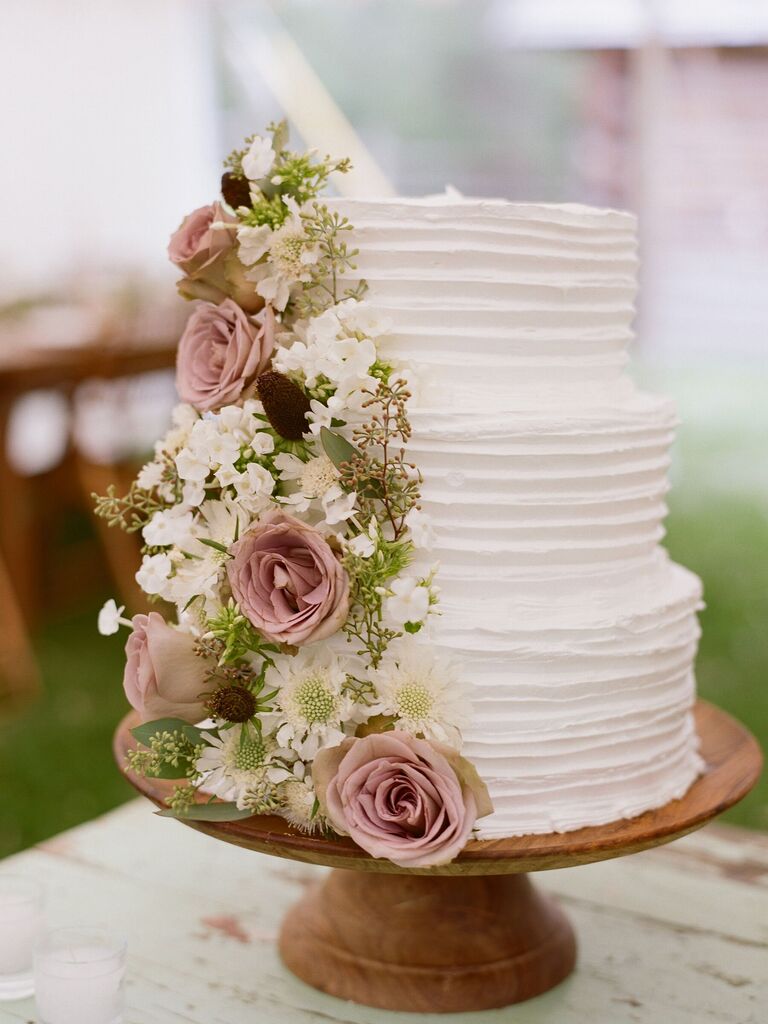
If you want to decorate your wedding cake with flowers, coordinate with both your florist and cake baker ahead of time—your florist will need to order extra flowers that match the rest of your arrangements. You'll either be responsible for picking up the flowers and delivering them to your cake baker a few days before the wedding, or the florist will bring them to your venue on the big day and help decorate the cake when it's delivered.
21. Welcome table
Encourage people to sign your wedding guest book and leave their well-wishes by decorating your welcome table with flowers and other personal touches, like photos from your relationship. The welcome table is also where you should collect cards and gifts.
22. Wreath
Wedding wreaths are rings of flowers and other decorative materials (like greenery and dried grasses) that can function as centerpieces, chair decor and more.
